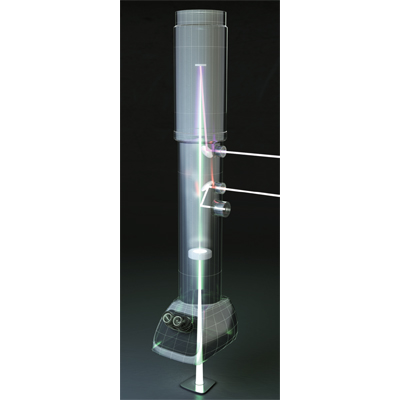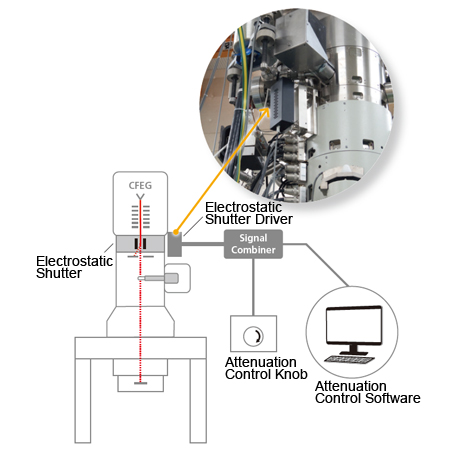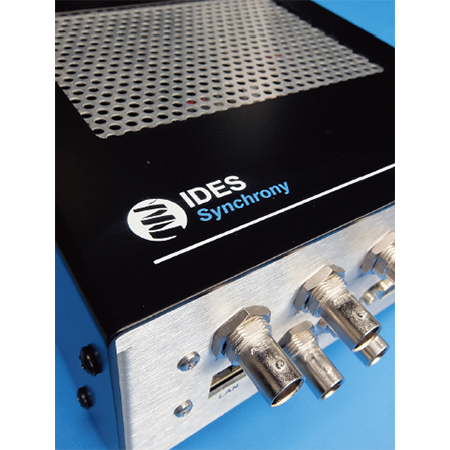Relativity™ Electrostatic subframing System
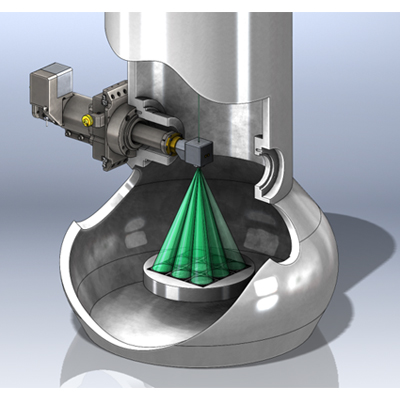
Features
Time resolution:
RelativityTM performs transitions between subframe regions in less than 100 ns.Continuous kHz-scale video:
RelativityTM can sustain subframe rates up to 100 kHz.Custom applications:
Integrate RelativityTM with an in situ holder, laser, IDES Electrostatic Dose Modulator, or other accessories.Simple field installation:
RelativityTM’s electrostatic optics are installed through an accessory port.Out of sight, out of mind:
Optics pneumatically retract out of the beam when they are not in use.Acuity Edge analysis server:
Automated data processing with segmentation and alignment of subframes helps you get the most out of your data.Advanced control software:
Seamlessly move between measurement programs with our intuitive interface, or use our powerful tools to design something new.
How does RelativityTM work?
RelativityTM installs an electrostatic optics assembly in a wide-angle camera port. These optics rapidly deflect the image data to different regions (or subframes) of the camera in a programmable sequence. Each camera readout contains a tiled array of crisp, blur-free subframes. Raw data is automatically analyzed to give a stack of images.
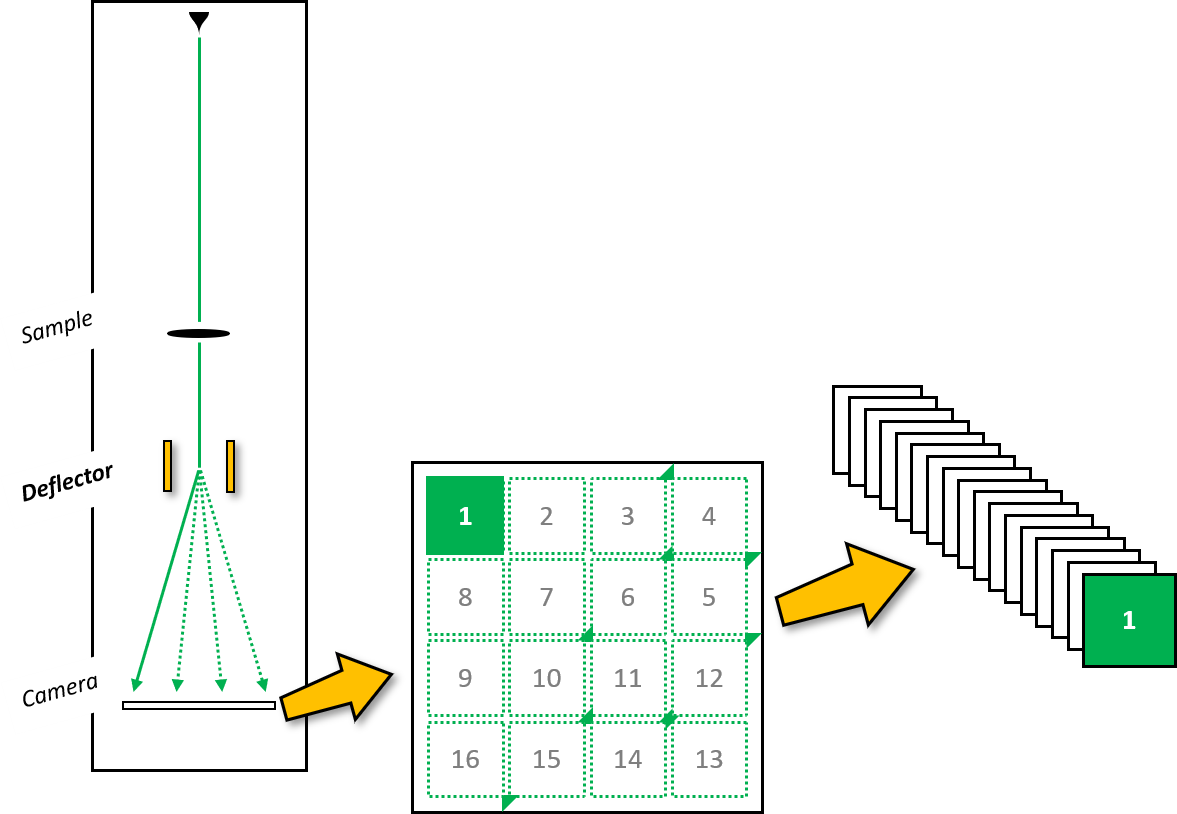
Applicable models: JEM-ARM300F/300F2, JEM-ARM200F, NEOARM, JEM-F200, JEM-2100Plus, JEM-2100F
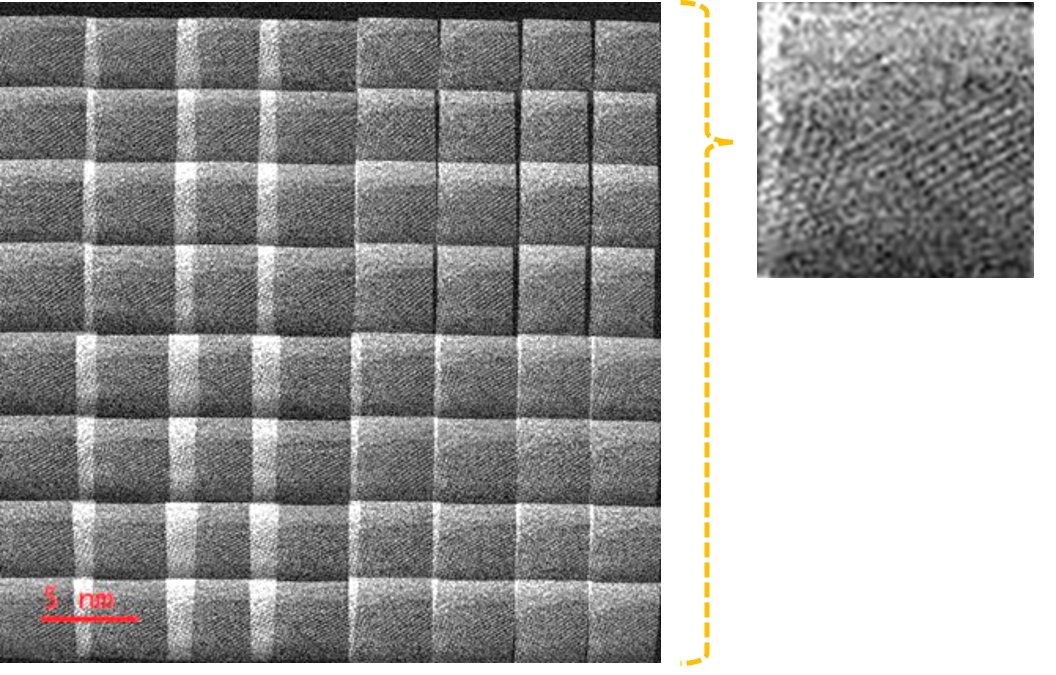
Left: 19,200 fps continuous video with atomic resolution, obtained using a gold nanoparticle sample by GRAND ARM™ at 80 kV. Top: One sub frame out of left tiling data with 52 μs exposure time.
Specifications
| Supported camera type | Bottom mounted camera(1) |
|---|---|
| RelativityTM deflector module install location | Side-mounted camera port(2) |
| Maximum subframe size on camera | 7 mm x 5.3 mm(3) (460 x 350 pixels(4), JEM-F200 with GATAN OneView) |
| Native subframe array lay out (no overlaps)(5) |
8 x 10 at 200 kV or lower, 7 x 8 at 300 kV (by GATAN OneView, ClearView, TVIPS XF416R) 5 x 6 (by GATAN RIO16) |
| Subframe array layouts(6) | 5 x 7, 8 x 10, 12 x 12 at 200 kV or lower 5 x 7, 7 x 8, 9 x 9 at 300 kV (for GATAN OneView or ClearView or TVIPS XF416R) 5 x 4, 5 x 6, 8 x 8 (by GATAN RIO16) |
| Acceleration voltage(7) | 40 kV or higher (by GATAN OneView, ClearView, TVIPS XF416R) 80kV or higher (by GATAN RIO16) |
| Auxiliary logic outputs Quantity Sample rate |
4 x TTL-compatible outputs 100 MS/s (MS: mega sampling) |
| Trigger input | 2 x TTL-compatible input |
Continuous frame recording feature (GATAN IS mode, TVIPS in-situ package etc.) is strongly recommended.
In the JEM-2100Plus, RelativityTM deflector module is installed in the left-side STEM detector port.
The subframe size is limited by the spacing between deflector electrodes (the "deflector gap").
Detailed information is available in the specification sheet of RelativityTMSubframe size depends on TEM and bottom mounted camera. Please ask IDES if needed.
Layout depends on TEM and bottom mounted camera. Please ask IDES if needed.
Due to geomatical constraints, different subframe array layouts are optimal for different detector sizes.
RelativityTM system is compatible with nearly all commercially-available cameras.
Please ask IDES if another camera is configured.Corresponding acceleration voltage depends on TEM and camera. Please ask IDES if TEM has another camera.
Gallery
◆Click the "replay" button in the box above, and the movie will start(1 min.)◆
Sub-millisecond Time resolved TEM images of CeO2 with Relativity™
In recent years, CMOS camera frame times have been reduced to tens of milliseconds; however, even faster imaging techniques are required for in-situ TEM observations to visualize dynamic specimen transformations. In this note, we report time-resolved TEM observations on the sub-millisecond order using the Relativity™ sub-framing system based on an electrostatic beam deflector manufactured by IDES.
The Relativity™ system is installed beneath the projection lens of the microscope and rapidly electrostatically deflects the TEM image before it reaches the camera sensor. This allows the capture of multiple small sub-frame images within a single camera exposure, enabling recording at time scales shorter than the camera's native frame time, and the sequential reconstruction of the images.
First, we compared a standard CMOS camera video at 25 fps (40 ms/frame) with a 500 fps (2 ms/frame, 488 x 272 per sub-frame) video acquired using the Relativity™ system with a 4 x 5 sub-frame setup. To facilitate direct comparison over the same field of view, a pseudo-25 fps video was generated by extracting one sub-frame every 25 sub-frames from the 500 fps video. Both videos were played back at ~1/8 speed (60 fps and 3 fps, respectively) to clearly show the dynamic behavior. The movies can be viewed by clicking on the button below. The sample observed was Au nanoparticles.
We also observed the time evolution of the (111) surface facets of CeO2 nanoparticles [1] along the [1-10] incident direction. During a 40 ms exposure, the electron beam was sequentially deflected to record 49 images, yielding a temporal resolution of approximately 0.82 ms per TEM image. Figure 1 shows the third (1.63 ms) and eighth (5.71 ms) frames of the sequence. Atomic-column structure changes occurring within approximately 4 ms are clearly visualized. The movies can be viewed by clicking on the button below, revealing single-atom fluctuations too fast for conventional frame rates to capture.
[1] CeO2 nanoparticle specimen: Courtesy of Johnson Matthey (UK).
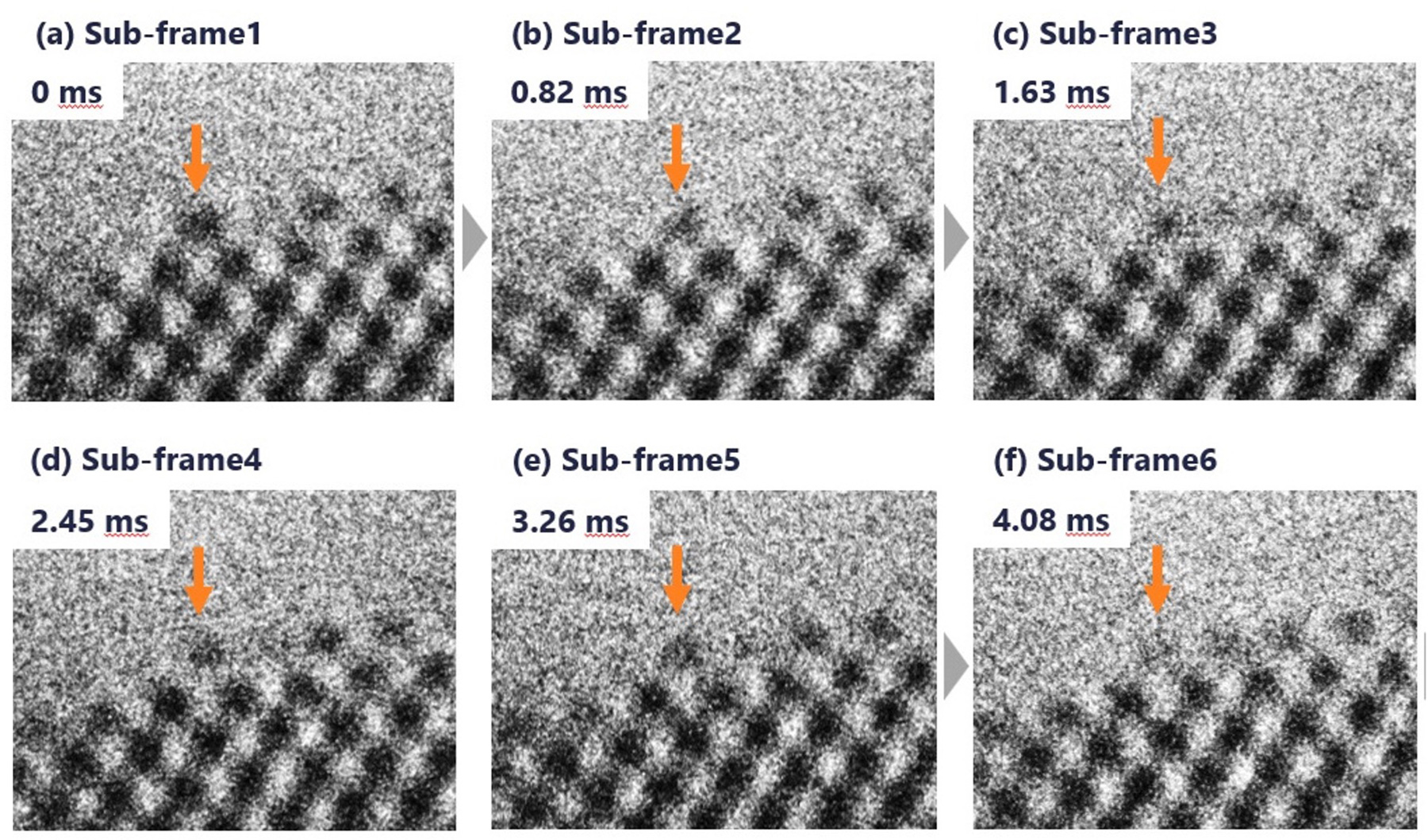
Related Products
Related Products
More Info
Are you a medical professional or personnel engaged in medical care?
No
Please be reminded that these pages are not intended to provide the general public with information about the products.

